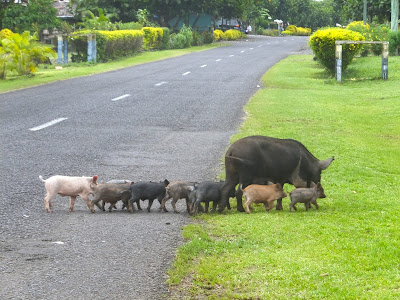Ministers and delegations have been furiously negotiating through the past several nights to revise the agreement text and slowly work through the myriad of options and brackets. An incredible amount of progress has been made over the past couple days, and the most recent draft – available on the UNFCCC website – is much shorter and cleaner that what was submitted to Ministers on Saturday.
A few key points, however, have been particularly difficult to work through. Countries agreed to hold an “Indaba of Solutions” at 11:30pm on Thursday, 10 December so that final compromises could be made in time for an agreement to be reached by the end of the COP on Friday. (Started at COP17 in Durban, South Africa, “indabas” are an informal meeting set-up where all countries gather around the table to voice their concerns and make compromises.)
So what are the main sticking points?
- Ambition. While every delegation has called for an ambitious agreement, the options remaining in the text suggest that some delegations have been taking that commitment more seriously than others. For the overall purpose of the agreement, countries have been considering below 2°C, well below 2°C (with a commitment to rapidly scale up efforts to limit the increase to 1.5°C), or 1.5°C. As the COP21 Twitter campaign #1point5toStayAlive clearly illustrates, a 1.5°C increase is the only viable option for Small Island Developing States. What has made this seemingly straightforward discussion more complicated is ensuring that this goal matches with the reality of national commitments. The way current Intended Nationally Determined Contributions stand, we are more realistically looking at a 3°C increase. Countries will have to seriously ramp up their commitments to bring us down to a 1.5°C increase.
- Differentiation. There is a clear divide between developed and developing countries on how these two country groups should be represented in the agreement. Developed countries argue that the dynamics of the international community are constantly evolving, and it is no longer accurate to have a strict bifurcation of country groups. They are calling for language that would allow for current developing countries to take on additional commitments based on how their national economic situation evolves over time. Developing countries, however, argue that this division of countries is still a very accurate reflection of reality internationally. They feel very strongly that this, combined with the historical responsibility of developed countries for current climate change, justifies respecting the country categories introduced in the original UN Framework Convention on Climate Change.
- Support. The debate on finance is very strongly connected to the discussion around differentiation. Developing countries would like to include strong language on the importance of new and additional support from developed countries in order for developing countries to be able to fulfill their commitments. Developed countries would like to soften that language so that while developed countries commit to provide financial support, there is a less stark divide between country groups. This discussion also extends to capacity building and technology transfer.
- Loss and damage. No matter how ambitious international efforts are, some countries – especially SIDS – will still be confronted with loss and damage associated with climate change. Vulnerable countries are calling for an article in the agreement that clearly establishes and outlines parameters for a international mechanism on loss and damage. Many developed countries are worried that this will translate into lawsuits against historical emitters in the event of extreme weather events and would like to keep mentions of loss and damage in the agreement as vague and as minimal as possible.
We are now well into the final day of COP21, and we're all eagerly waiting for the announcement of the final Comité de Paris meeting, where the final agreement will be shared with Parties.







































